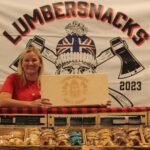The decades-old softwood lumber dispute between Canada and the United States appears headed for another contentious chapter as President-elect Donald Trump prepares to return to the White House. Industry experts warn that Trump’s protectionist stance could intensify the trade conflict, potentially putting Canadian lumber producers on the defensive once again.
“The history of this dispute tells us everything we need to know about what’s coming,” says Susan Yurkovich, former president of the BC Lumber Trade Council. “When Trump took office in 2017, we saw immediate escalation, with duties reaching nearly 21 percent. There’s little reason to believe his approach will be different this time.”
The softwood lumber conflict, which dates back to the 1980s, centers on U.S. allegations that Canada unfairly subsidizes its lumber industry through provincial forest management practices. Canadian officials have consistently rejected these claims, pointing to repeated victories at international trade tribunals.
During Trump’s first term, the dispute intensified dramatically. His administration imposed countervailing and anti-dumping duties that significantly impacted Canadian producers, particularly in British Columbia and Quebec. These provinces, which account for approximately 60% of Canadian softwood exports to the U.S., saw their market share erode as prices increased for American buyers.
Industry analysts from TD Economics suggest the timing could be particularly challenging. “We’re witnessing a perfect storm of factors,” notes Patricia Mohr, commodity market specialist. “Housing starts in the U.S. are already under pressure from high interest rates, and additional trade barriers would further suppress demand just as Canadian producers are struggling with increased production costs.”
What makes this round potentially more concerning is the broader economic context. The Canadian forestry sector has already weathered significant challenges, from the mountain pine beetle infestation in western Canada to pandemic-related supply chain disruptions. Canadian lumber exports to the U.S. represent approximately $8 billion annually, supporting over 100,000 direct and indirect jobs across the country.
Federal Trade Minister Mary Ng has signaled that Canada remains committed to defending the industry. “We have consistently prevailed in international tribunals because our practices are fair and market-based,” Minister Ng stated during a recent press conference. “We will continue to advocate for our forestry workers and communities while pursuing all available avenues to resolve this dispute.”
Some industry players are exploring diversification strategies to reduce dependence on the U.S. market. “We’ve been actively developing alternative markets in Asia, particularly Japan and China,” explains Don Kayne, CEO of Canfor Corporation. “While the U.S. remains our largest trading partner, expanding our global footprint provides some insulation against trade volatility.”
The dispute highlights fundamental differences in forestry management approaches between the two countries. In most Canadian provinces, forests are predominantly publicly owned, with companies paying stumpage fees to harvest timber. In contrast, U.S. forests are largely privately owned, with timber prices determined through auction systems.
The economic consequences extend beyond the lumber industry itself. Construction costs in the United States typically rise when Canadian lumber faces trade restrictions, affecting housing affordability at a time when many markets are already experiencing affordability challenges. The National Association of Home Builders estimates that previous lumber duties added approximately $9,000 to the cost of an average new single-family home in the U.S.
As Canada prepares for potentially intensified trade tensions, the question remains: can diplomatic channels prevail in a relationship increasingly defined by economic nationalism, or will Canadian lumber producers need to fundamentally rethink their business models in response to the changing trade landscape?
























